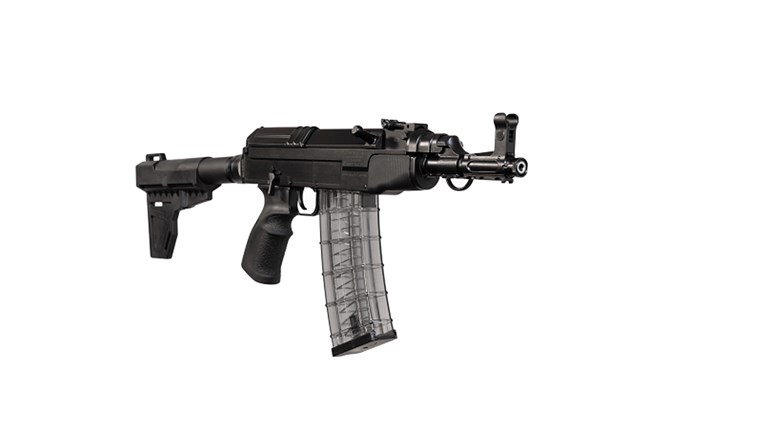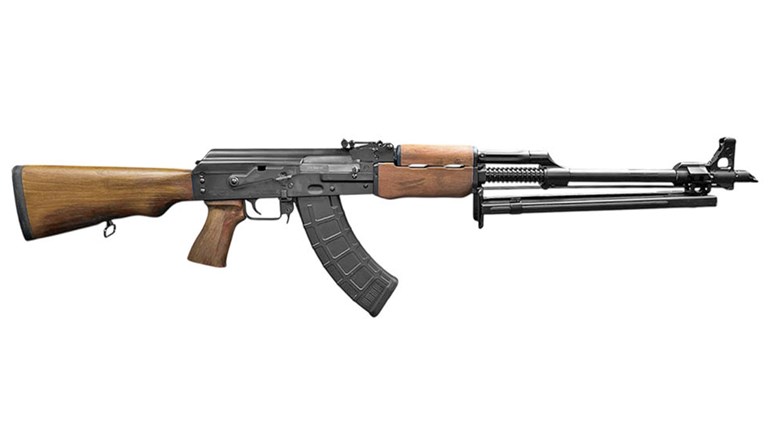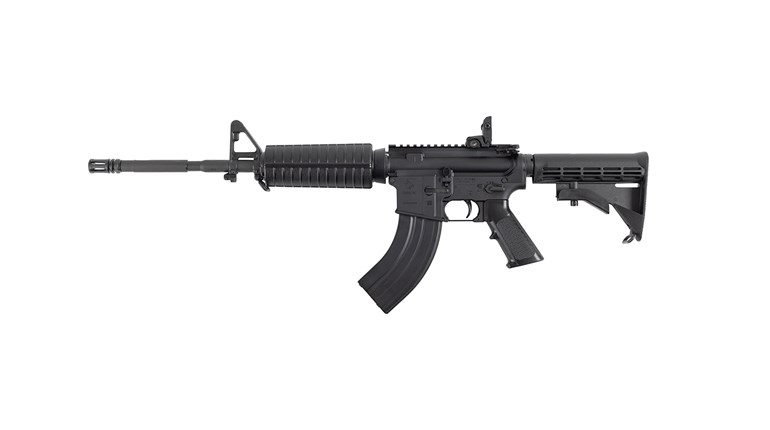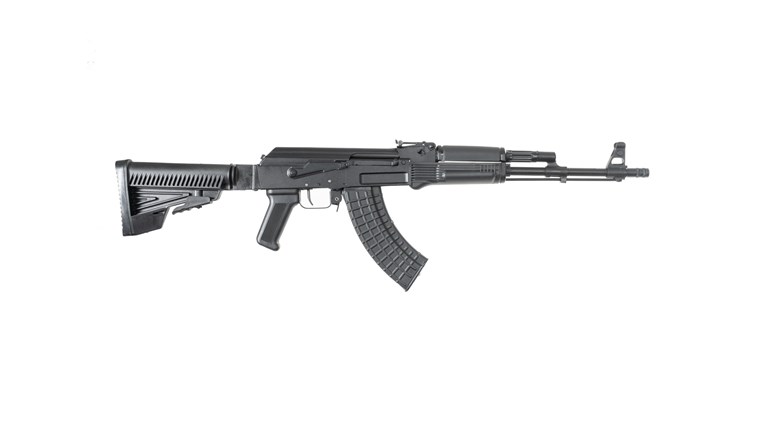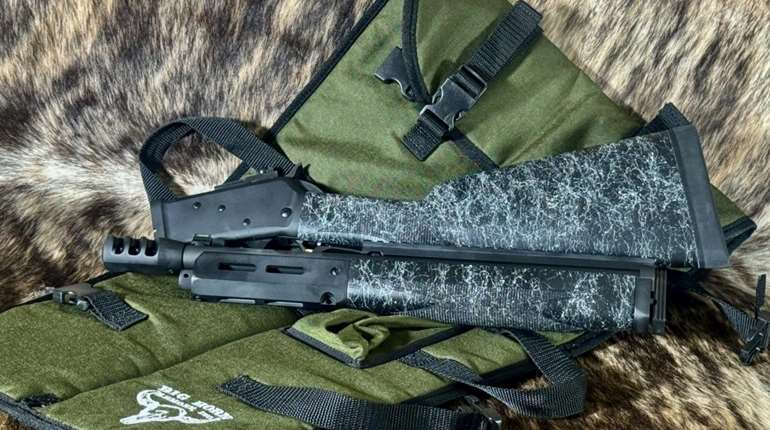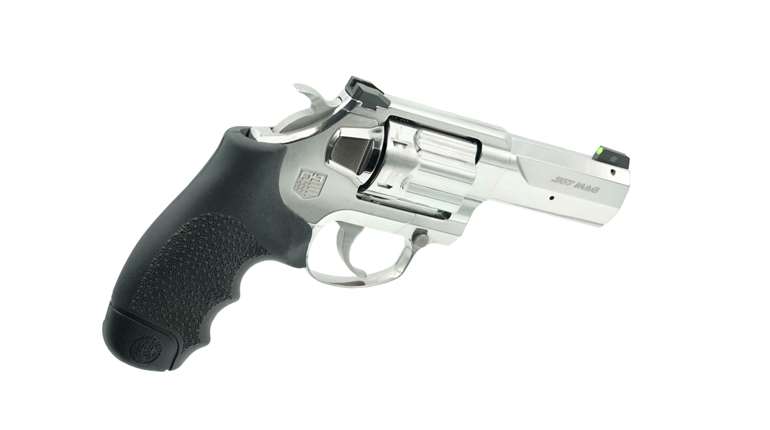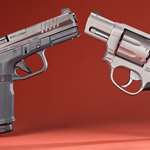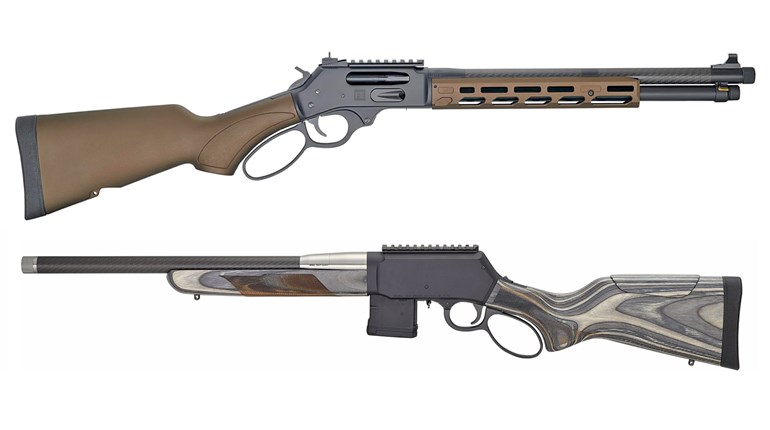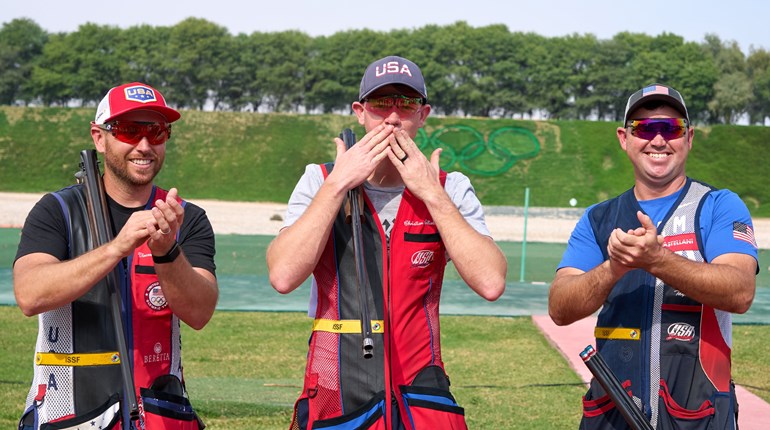
The term "black rifle" was coined to describe the family of modern military firearms springing up in the Western world beginning in the 1950s. Rifles such as the G3, FAL and M16 took advantage of modern materials and cutting-edge design to create a uniquely new category of firearms. However, the Soviet Union had its own contribution to the modern military rifle family—the AK. While it may not have been made from space-age synthetics or aluminum, it was equally significant in both its design and production.
With estimated world wide production numbers hovering in the 80- to 100-million mark, the AK-pattern rifle is easily one of the most recognizable firearm designs. The reason behind the prevalence of this rifle is a combination of design and the Cold War politics behind it. The Soviet Union, in its desire to encourage communist revolutions around the globe, provided the rifles and the means to manufacture them to compatriots and allies. Considering the rifle to be part of its "foreign aid" program, the Soviets practically gave away the AK and its production means in the hopes it would either help protect allied governments or overthrow unfriendly ones.
The Man, the Gun
Mikhail Timofeyevich Kalashnikov designed the AK rifle, or Kalashnikova Avtomat, shortly after World War II. During the war, Kalashnikov distinguished himself as an armorer and a tanker, developing and improving equipment for tanks as well as modifying and refining the firearms he had been issued. After the war, Kalashnikov delved deeply into his primary interest—firearm design. Building upon earlier work on both a submachine gun and a selective-fire rifle, Kalashnikov developed a series of prototype rifles that culminated in the AK-47 in 1947.
The AK-47 was chambered in 7.62x39 mm, an intermediate cartridge. It differed from the earlier 7.62x54 mm cartridge employed in the Russian Model 91/30 rifle in that it was both a rimless cartridge and significantly shorter in length. The beauty of the cartridge, which was also chambered in the SKS rifle, was that it offered enough power to be effective out to several hundred yards, yet had minimal recoil. Consequently, if chambered in the proper firearm, it could combine the high rate of fire of a submachine gun with the power and extended range of a rifle.
The first version of the AK-47 employed a stamped, sheet-steel receiver with a machined-steel trunnion in the forward section to accept the barrel assembly. Although this configuration offered the positive attributes of reduced weight and minimized production costs and time, difficulty in welding the receiver and a propensity for it to warp when heated created more problems than the design solved. Ultimately, a second AK model that employed a machined receiver was adopted in 1949 to give designers time to solve the stamped receiver issues. A third version was developed in the mid-1950s that modified the stock attachment method to a more simplified version.
Although the machined-receiver AK solved the aforementioned problems, the increased labor and material costs combined with the greater weight of the receiver encouraged the Soviets to return to the sheet-metal receiver design of the first AK. As a result, around 1960 a new version of the AK-47 called the AKM, or Modernizirovinniy Avtomat Kalashnikova, was introduced that took advantage of new developments in Soviet sheet-metal receiver technology.
The AKM featured a top cover stamped from thinner metal than the earlier AK-47, but with reinforcing ribs throughout its length for additional strength. The wooden stocks of the AK-47 exhibited a certain fragility, so the AKM employed laminated wood initially and synthetic materials later. Also, to make the firearm more controllable under fully automatic fire, a slant muzzle-brake attachment was added to the threaded muzzle of the rifle.
Why So Popular?
The ingeniousness of the AK rifle is both its simplicity of manufacture and operation. The design, known for its rugged reliability, operates on very basic principles. It is a gas-operated, rotating-bolt rifle. A gas port is bored into the top of the barrel roughly two-thirds of the way from the breech. When a cartridge is fired and the bullet passes this port, gas pushed into it and through the gas block exerts pressure against the face of the gas piston attached to the bolt carrier and located in the gas tube above the barrel and lower handguard. As the piston moves rearward, the bolt carrier retracts and rotates the dual-opposed locking-lug bolt from the mated recesses in the trunnion, extracts the empty cartridge case and ejects it out of the ejection port. The forward motion of the bolt strips a fresh cartridge out of the magazine and loads it into the chamber.
For the user, operating the rifle is extremely simple. Insert a loaded magazine into the magazine well with the bottom of it canted forward and "rock" it rearward until it locks solidly. The operating rod handle, located on the bolt carrier, may then be used to retract and release the bolt and carrier to chamber a cartridge. The safety of the AK rifle is a large lever located on the right side of the receiver that also acts as a dust cover to keep debris out of the action. Standard AK-pattern rifles do not employ a bolt hold-open device.
Easy operation, affordable design and practically unquestionable reliability make the AK-pattern rifle extremely popular as a civilian arm. In semi-automatic-only form with the proper number of U.S.-made parts for BATFE regulations compliancy, the AK is alive and well in the U.S. civilian market. One of the largest and most well-known manufacturers of civilian-legal AK rifles is Century International Arms. As a matter of fact, its product line is so broad that it includes semi-automatic versions of most of the more common AK-style variants.
GP WASR-10
Century's version of the standard-bearer AKM is the GP WASR-10. The 7.62x39 mm rifle is manufactured at the Cugir factory in Romania, a country that is one of the world's more prominent manufacturers and suppliers of AK-style rifles. It is imported into this country by Century where it is modified and fitted with U.S. parts for BATFE compliance. The GP WASR-10 features a bayonet lug, threaded muzzle with slant-brake attachment and laminated stock set.
Fit and finish of the 8-pound, 5-ounce Parkerized rifle clearly reflects the philosophy behind the design—utilitarian and nothing more. The high-capacity magazines lock solidly and easily into place on this AK variant. Its 161⁄4-inch barrel even exhibits exterior tooling marks, and parts such as the front and rear sight bases and gas port block have rough shaping impressions.
The GP WASR-10 does a good job of mimicking a true AKM rifle and all its requisite updates from the original AK-47 design. Like the AKM rifle, it has a stamped receiver and a ribbed top cover. The fixed stock is also reminiscent of an AKM, as it is made from laminated wood.
The trigger pull is surprisingly good at 7 pounds, 4 ounces, and it broke cleanly, which is a rarity. Strangely, rather than having a conventional two-stage trigger, the GP WASR-10 has three distinct stages. It also has a bit of "trigger slap," where the recoil impulse is transmitted through the trigger to the shooter's finger. Firing the rifle was, frankly, a great deal of fun. It exhibited almost monotonous reliability, functioning consistently with several types of ammunition.
For accuracy testing, I took advantage of one of the more interesting features of the later-model AKM rifles—the side-mount scope rail. This built-in feature allows for simple mounting of an appropriate scope and rail—in this case a POSP 6x24 mm illuminated-reticle scope from Centerfire Systems. Accuracy was on par with what is common in these rifles, and possibly a bit better than usual due to the use of an optic. The retail price of the rifle is $450.
M72
The RPK, or Ruchnoi Pulemet Kalashnikova, was the adaptation of the basic AK design to fit the light machine gun role. The RPK variant features a longer and heavier barrel with a folding bipod fitted at the muzzle end. In addition, RPK rifles have a modified receiver in which the forward area around the trunnion is enlarged and reinforced.
Century Arms is offering a civilian version of the Yugoslavian variant of the RPK with its M72, chambered in 7.62x39 mm. The rifle is made from a combination of original Zastava-produced Yugoslavian RPK rifle parts and U.S.-manufactured compliance parts. The U.S.-marked stamped receiver features a reinforced and enlarged area around the trunnion, and the rifle comes standard with a folding bipod, threaded muzzle with a slant muzzle brake and rear sight adjustable for windage.
Fit and finish of the 11-pound, 6-ounce M72 is above average, with an evenly applied, Parkerized gray finish. The new 21-inch barrel has a "bullish" profile like the original, with a diameter of .765 inch. The wooden stock set is in very good condition, and the buttstock is fitted with a rubber buttpad like the original.
The M72, while an RPK-style rifle, is unique from most standard RPK-pattern guns. Although it does have the lengthened barrel and folding bipod of the RPK, it has some uniquely "Yugoslavian" features such as the original-style cooling fin cuts on the heavy barrel just behind the gas block and forward of the fore-end. Also, it has a standard-profile buttstock rather than the more commonly seen "club foot" style with extra mass at the toe for the support hand.
At the range, the M72 was both a pleasure and a bit frustrating. The gun functioned flawlessly, but the trigger exhibited a heavy pull and a bad case of trigger slap. Despite those qualities, accuracy results were acceptable. The retail price of the M72 is $1,400.
M70AB2 Underfolder
The AKMS is a variant of the standard AKM, with the "S" standing for skladyvaayushchimsya, denoting a folding stock. Although the earliest versions of the underfolder stock were made from machined steel, modern variants are made from stamped steel. In addition, rather than a full oval buttplate, the buttplate is U-shaped with an open top to allow the stock to be folded and unfolded with a magazine inserted in the rifle.
Century's semi-automatic M70AB2 rifle is a civilian-legal version of the original Yugoslavian rifle, originally designed as a copy of the Soviet AKMS. The 7.62x39 mm rifle features a threaded muzzle with a slant brake installed and a bayonet lug and weighs in at 8 pounds, 11 ounces. One interesting feature is the 30-round magazine included with the rifle. An original Yugoslavian magazine, it features a standard bolt-hold-open follower that holds the bolt back when the magazine is empty; however, withdrawing the magazine allows the bolt to slam home. The rifle is a combination of original Yugoslavian rifle parts and U.S.-made compliance parts. The fit and finish of the rifle is more than acceptable, with an evenly applied Parkerized finish and an above-average-condition wood fore-end.
The M70AB2 has some novel features that set it apart from the run-of-the-mill AK variant. First, it has the enlarged and reinforced area around the trunnion like the RPK on its stamped receiver. In addition, a unique grenade ladder sight located on the gas block, when rotated into its upward open position, provides meter range marks and cuts off the gas port in the gas block. Also, the rifle features front and rear flip-up night sights, although the luminous material has long since disappeared.
Although I was at first a bit trepidacious about firing the rifle with the uncomfortable-appearing stock, it turned out to be quite easy on the cheekbone and shoulder. The rifle performed admirably, had a smooth and comfortable trigger and was reasonably accurate. The retail price of the M70AB2 Underfolder is $650.
While the AK-pattern rifle may not be the most glamorous rifle, its ruggedness and reliability make it an excellent choice for shooters searching for a dependable rifle at an affordable price. In addition, it represents a chance to own and appreciate an intriguing relic of the Cold War era that is still running strong.












